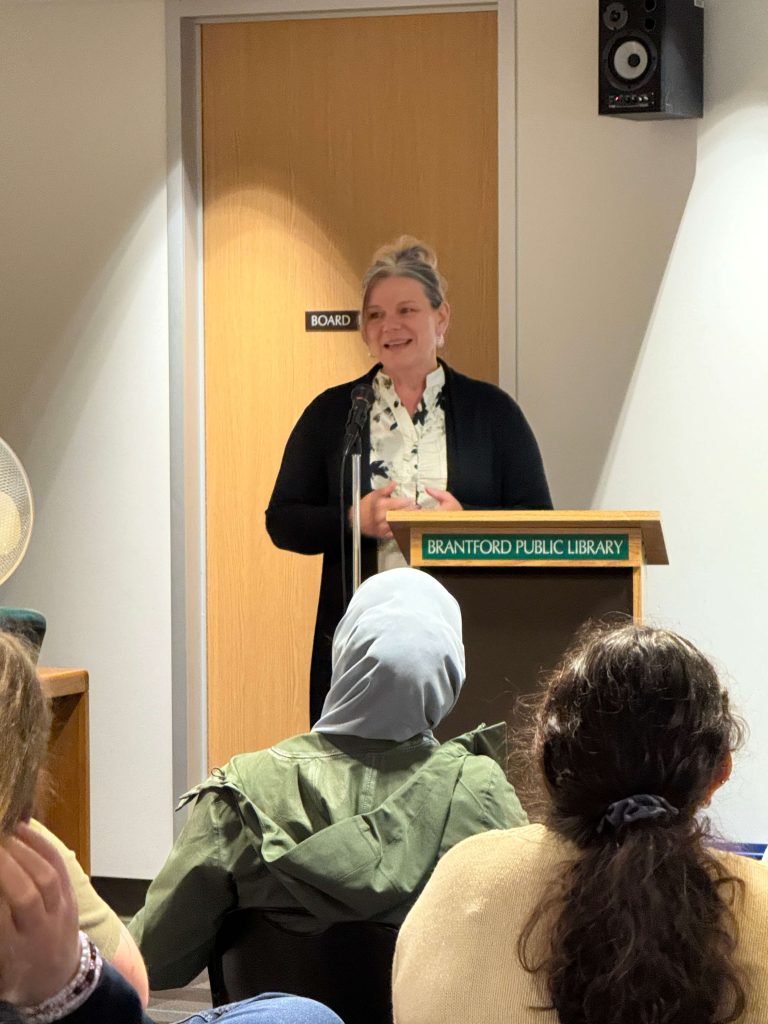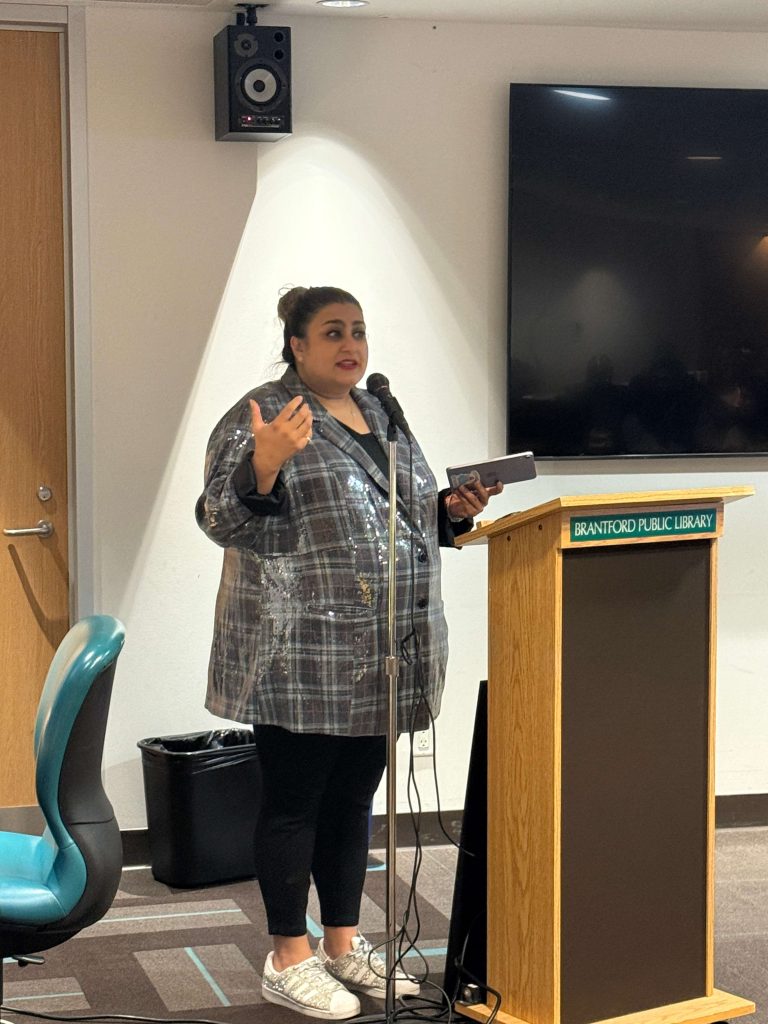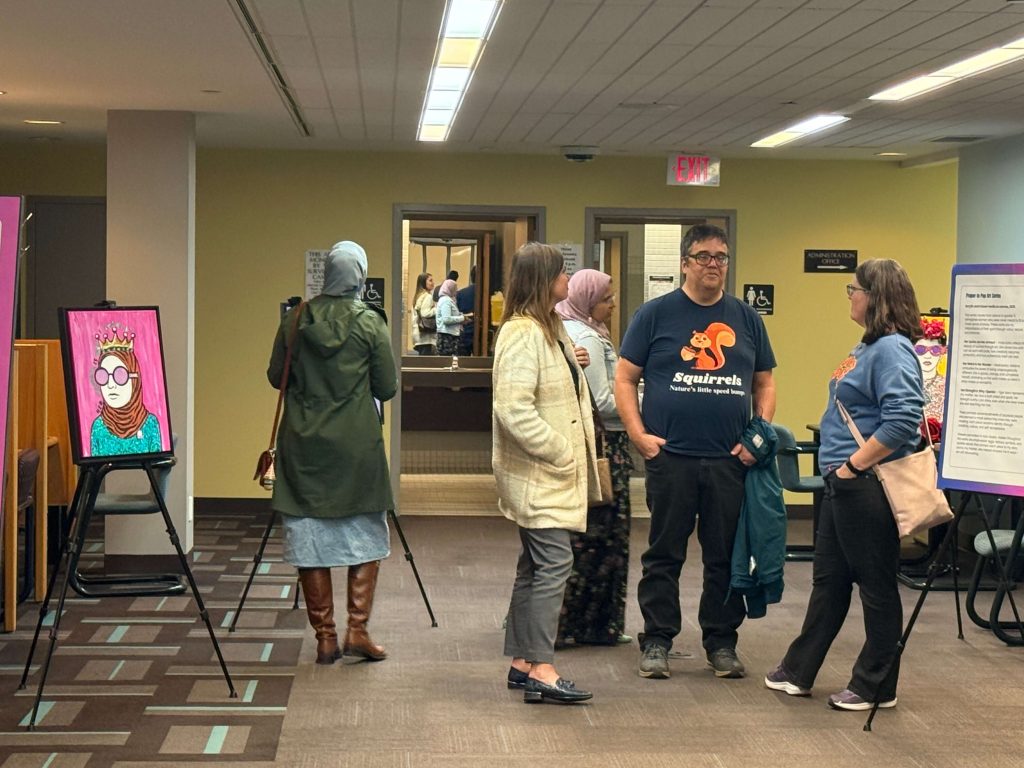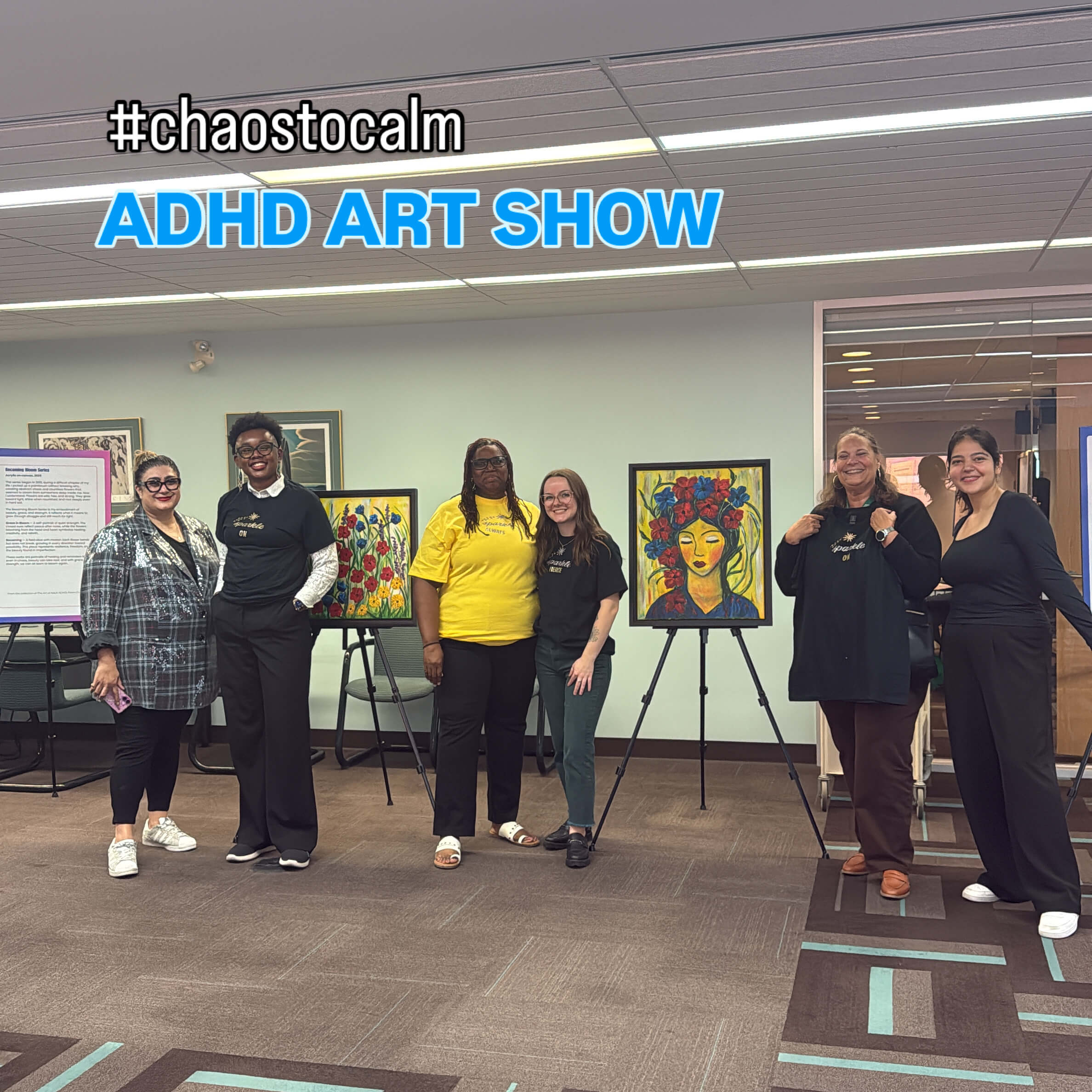When ADHD Meets Auditory Processing Disorder
October 10, 2025
Understanding the Overlap in Children—Especially Girls
By Theresa Vidal, EDI & Engagement Coordinator
Childhood is often described as a symphony of sounds, sights, and sensations. But for some children—particularly girls—that symphony can feel more like noise: disjointed, overwhelming, and hard to make sense of.
When Attention-Deficit/Hyperactivity Disorder (ADHD) coexists with Auditory Processing Disorder (APD), the result is a complex and often misunderstood experience that can affect learning, relationships, and emotional well-being.
Let’s unpack what this overlap looks like, why it’s often missed in girls, and how caregivers and educators can better support these children.

On October 8th, 2025 , Sherri Dockree, Chair of Woodview’s Board, gave an engaging speech on her experience with ADHD.
What Are ADHD and APD?
ADHD is a neurodevelopmental disorder that can include:
- Difficulty paying attention
- Impulsivity or hyperactivity
- Trouble planning, remembering, and organizing
- Emotional regulation challenges
Auditory Processing Disorder (APD)—also known as Central Auditory Processing Disorder (CAPD)—affects how the brain interprets sound. Children with APD often:
- Hear normally but have trouble processing spoken information
- Struggle to follow verbal instructions, especially in noisy settings
- Mix up similar-sounding words
- Frequently say “What?” or “Huh?” even when they’ve heard correctly
Note: ADHD rarely occurs alone. It’s often diagnosed alongside other conditions, making individualized strategies essential.
Why Girls Are Often Overlooked
ADHD in girls can look different from ADHD in boys.
While boys often display more visible hyperactivity, girls are more likely to:
- Be quietly inattentive or daydream
- Struggle with organization and focus
- Internalize their struggles through anxiety or perfectionism
- When APD is added to the mix, girls may:
- Misinterpret instructions
- Seem “spacey” or “disconnected”
- Avoid oral participation in class
- Struggle with reading, spelling, or phonics
Because these behaviours can be subtle, they’re often mistaken for shyness or anxiety—leading to under diagnosis or misdiagnosis.

Artist Dr. Ruby Latif speaks at the ADHD Art Show at the Brantford Public Library.
What This Looks Like Day-to-Day
| Setting | Possible Challenges |
|---|---|
| Classroom | Difficulty following multi-step instructions, zoning out during lessons, poor note-taking |
| Social settings | Trouble keeping up with group conversations, misunderstanding jokes or tone |
| Homework time | Frustration with reading comprehension, skipping words aloud, emotional meltdowns |
| Family interactions | Appearing to “ignore” parents, difficulty following routines, frequent “What did you say?” |
These daily misunderstandings can take an emotional toll—leaving children and their families frustrated, exhausted, and unsure how to help.
Strategies for Support
Supporting children with both ADHD and APD requires teamwork among caregivers, educators, and professionals.
At School
- Preferential seating: Sit away from noisy areas
- Visual aids: Written instructions, diagrams, and checklists
- FM systems: Amplify the teacher’s voice directly to the child
- Chunk information: Break lessons into short, manageable parts
At Home
- Predictable routines: Reduce overwhelm with structure
- Visual cues: Use charts, timers, and labels
- Repeat and rephrase: Give directions slowly, then in different words
- Quiet spaces: Limit background noise during homework or reading
With Professionals
- Audiologist: Evaluate and confirm APD
- Psychologist or physician: Assess for ADHD and related conditions
- Speech-language therapist: Build auditory listening and discrimination skills
- Behavioural therapist: Support coping skills and emotional regulation
Getting Help
If you’re concerned your child might be struggling with both ADHD and APD, reach out for support early.
Local mental health organizations, like Woodview Mental Health & Autism Services, provide specialized programs for children, youth, adults, and families navigating these challenges.
These professionals can guide you through assessment options and create personalized strategies that help your child thrive at home, school, and in the community.
Final Thoughts
October is ADHD Awareness Month—a time to recognize the complexity of ADHD and the many ways it can intersect with other conditions.
Girls with ADHD and APD often live in a world that feels too loud, too fast, and too confusing. Their challenges are real—but with awareness, compassion, and the right supports, they can flourish in environments that understand and celebrate their unique strengths.
Trust your instincts. If something feels “off,” seek guidance early—because early intervention can make all the difference.
From Chaos to Calm: ADHD Art Show
On October 8th, 2025, community members gathered at the Brantford Public Library for From Chaos to Calm—an inspiring ADHD art show celebrating creativity, neurodiversity, and lived experience.
Hosted in partnership with Woodview Mental Health & Autism Services, Brantford Public Library, CMHA, BCHS, and the Brantford Brant Norfolk Ontario Health Team (BBNOHT), the evening featured powerful artwork and poetry exploring the emotional landscape of living with ADHD.
Guests met featured artist Dr. Ruby Latif, who shared her personal journey and how art became her outlet for understanding and self-expression. The event opened with a welcome and land acknowledgement by Erica Dudszus of the library, remarks from Lili of CMHA, and a heartfelt message from Sherri Dockree, Chair of Woodview’s Board of Directors.
With a full house and an atmosphere of connection and insight, From Chaos to Calm served as a beautiful reminder of the strength and creativity within neurodiverse experiences.





Dr. Ruby Latif, featured Artist and also of Brant Community Healthcare System, with Lill Petrella from Canadian Mental Health Association, Brant-Haldimand-Norfolk Branch


